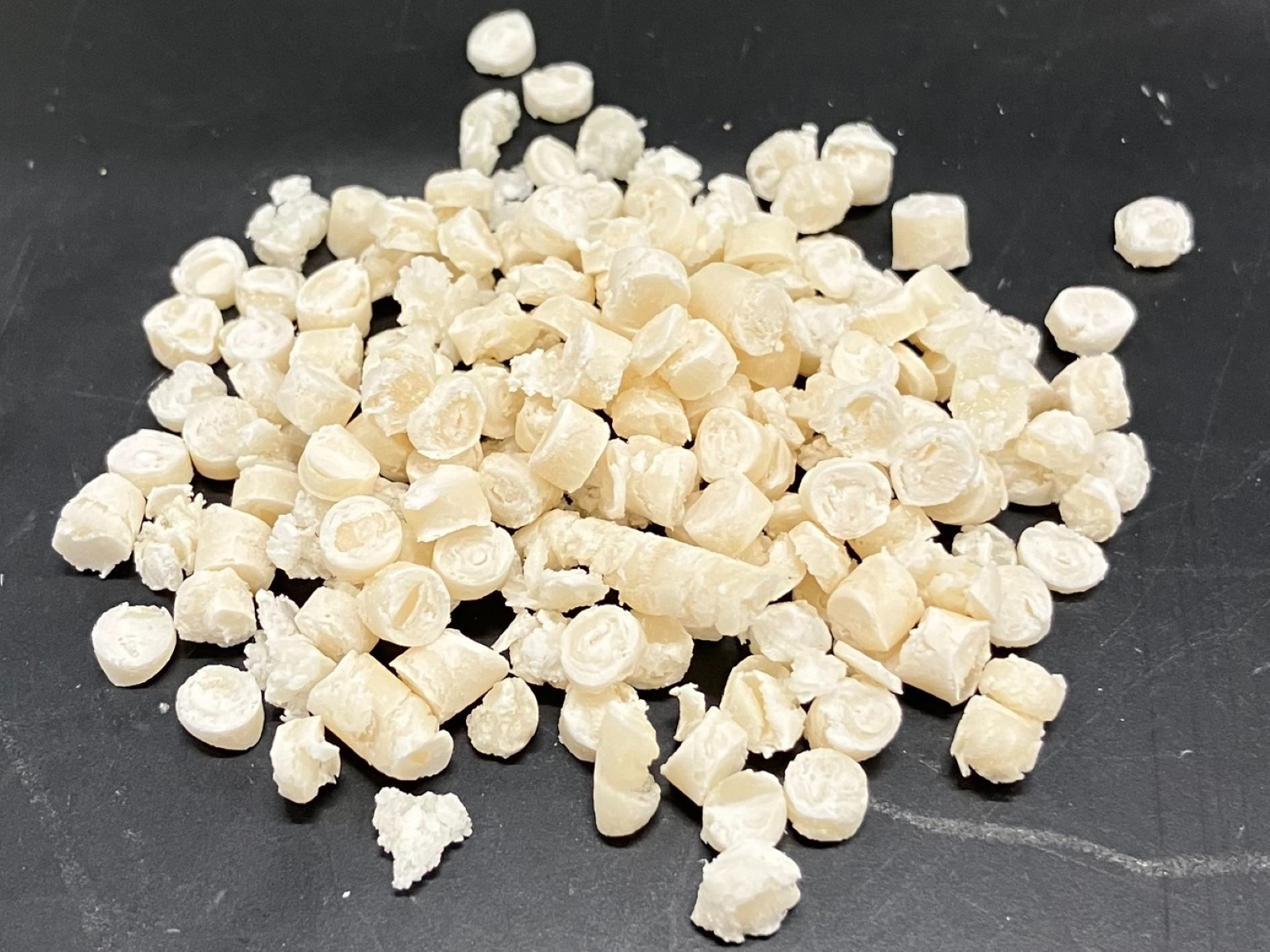
Dec 15, 2025
- Company
- Press Releases

Jan 08, 2025
Company / Press Releases
Osaka, Japan, January 7, 2025 – Panasonic Holdings Corporation (Panasonic HD) has developed a molding material with full marine biodegradability by applying the technology the company has been developing to incorporate highly concentrated cellulose fiber derived from plants into resins. By adding plant-derived cellulose fiber at high concentrations to marine biodegradable resins, Panasonic HD has succeeded in developing a molding material that achieves both excellent mechanical properties and marine biodegradability.
The global demand for reducing the use of resins has increased due to concerns over environmental impact, such as marine plastic pollution, depletion of petroleum resources, and global warming. This aligns with the United Nations' Sustainable Development Goals (SDGs), including the goal aiming for efficient use of natural resources (Goal 12) and the prevention and significant reduction of marine pollution (Goal 14).
Since 2015, Panasonic HD has been working on reducing the use of petroleum-derived resins. Panasonic HD had developed a composite processing technology that incorporates cellulose fiber at a concentration of 55% in 2019. In 2021, Panasonic HD further advanced the technology to increase the amount of cellulose fiber up to 70%, and over 90% or more biomass content in March 2022. In December 2022, Panasonic HD further enhanced the biodegradability of this material in natural environments by developing a fully biodegradable molding material using plant-derived resins (such as polylactic acid).
To reduce environmental pollution risks especially in marine environments, where even a molding material that is completely biodegradable in soil is difficult to decompose, Panasonic HD has proceeded with efforts to develop marine biodegradable molding material. By modifying mixing and molding technologies, Panasonic HD has succeeded in developing a plant-derived cellulose fiber molding material (100% biomass content) that has complete marine biodegradability and comparable strength to polypropylene (PP) used in durable applications. Just like conventional kinari (*1), the new material is also available as white pellets that can be colored as needed.
This new material has been certified as a "Marine Biodegradable & Biobased Plastics" by the Japan Bioplastics Association (*2).
Panasonic HD plans to start selling pellets of this material by 2027 and aims to leverage its unique properties for many applications, including household appliance casings, automotive parts, consumer goods, beverage and food containers. Through these efforts, Panasonic HD aims to promote corporate activities contributing to a sustainable society by reducing resin usage.
This new material will be exhibited at the CES 2025 in Las Vegas, USA from January 7 to 10, 2025.
*1: kinari website
https://www.ppe-biz.com/en/kinari
*2: Japan Bioplastics Association website
http://www.jbpaweb.net/english/index.html

Marine biodegradable cellulose fiber molding material

Marine biodegradable cellulose fiber cup using cellulose fiber molding material
Flexural elasticity and bending strength value versus polypropylene (PP)
|
Marine biodegradable material (New) |
Biodegradable material |
PP |
|
|---|---|---|---|
|
Flexural elasticity |
4.8 |
3.5 |
1.0 |
|
Bending strength |
1.1 |
1.5 |
1.0 |
The Panasonic Group has set forth its long-term environmental vision, "Panasonic GREEN IMPACT," with the aim of achieving both a better life and a sustainable global environment for all. Under PGI, Panasonic Group strives towards achieving virtually net zero CO2 emissions from its own operations by 2030, and will contribute an impact of more than 300 million tons (*3) of reduced and avoided CO2, which is equivalent to about 1 percent of the current global total of approximately 31.7 billion tons (*4) by 2050. The group also works on business activities to realize a circular economy in which resource efficiency contributes to decarbonization and reduces the consumption of limited natural resources.
*3: CO2 Emission factor based on 2020
*4: 31.7 billion tons of energy-derived CO2 emissions in 2020 (Source: IEA)
https://holdings.panasonic/global/corporate/panasonic-green-impact.html
kinari website
https://www.ppe-biz.com/en/kinari
Japan Bioplastics Association website
http://www.jbpaweb.net/english/index.html
|
About the Panasonic Group Founded in 1918, and today a global leader in developing innovative technologies and solutions for wide-ranging applications in the consumer electronics, housing, automotive, industry, communications, and energy sectors worldwide, the Panasonic Group switched to an operating company system on April 1, 2022 with Panasonic Holdings Corporation serving as a holding company and eight companies positioned under its umbrella. The Group reported consolidated net sales of 8,496.4 billion yen for the year ended March 31, 2024. To learn more about the Panasonic Group, please visit: https://holdings.panasonic/global/ |
The content in this website is accurate at the time of publication but may be subject to change without notice.
Please note therefore that these documents may not always contain the most up-to-date information.
Please note that German, Spanish and Chinese versions are machine translations, so the quality and accuracy may vary.